Toxicodendron vernix
Poison Sumac
[ click on any image below to see larger version ]
Family:
Anacardiaceae
Mid-Atlantic bloom time:
May - early June
Mid-Atlantic fruit ripe:
August - September
With a tree or shrub-like form, and leaves that resemble sumac, Poison Sumac could easily be overlooked as a potential threat.
However, all parts of it contain the same poisonous urushiol oil as its close relative
Poison Ivy (Toxicodendron radicans)
and can cause the same blistering rash.
Poison Sumac grows in moist or flooded soils, such as floodplains, not in consistently dry areas.
Look for leaves with 5-13 leaflets (fewer in young plants), arranged in double rows plus one at the end.
Young leaves have a red petiole and rachis (the "stems" of the leaves), and
the leaflets are usually entire (no serrations).
Its bark is a smooth gray when young, turning rougher as it grows older.
Poison Sumac's berries are somewhat laterally flattened and greenish, maturing to white (not red like sumac).
Autumn leaves are usually brilliant orange, yellow, or red.
22 June 2019
Bull Run Mountains Natural Area Preserve, Antioch, VA
(young specimen)
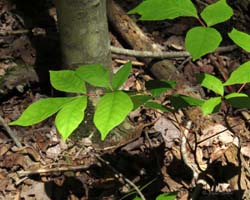
|
22 June 2019
Bull Run Mountains Natural Area Preserve, Antioch, VA
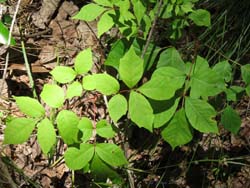
|
16 July 2019
Bull Run Mountains Natural Area Preserve, Antioch, VA
(this is about as big as it gets)
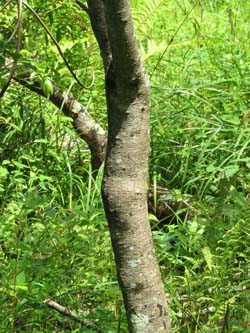
|
16 July 2019
Bull Run Mountains Natural Area Preserve, Antioch, VA
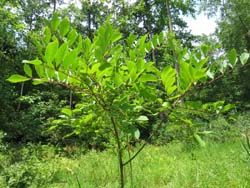
|
16 July 2019
Bull Run Mountains Natural Area Preserve, Antioch, VA
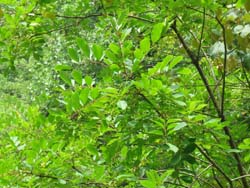
|
16 July 2019
Bull Run Mountains Natural Area Preserve, Antioch, VA
(ripening seeds)
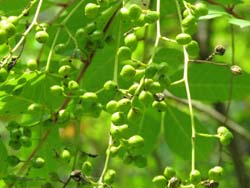
|
16 July 2019
Bull Run Mountains Natural Area Preserve, Antioch, VA
(showing shape of ripening seeds)
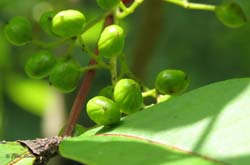
|
|
Return to list of flora






